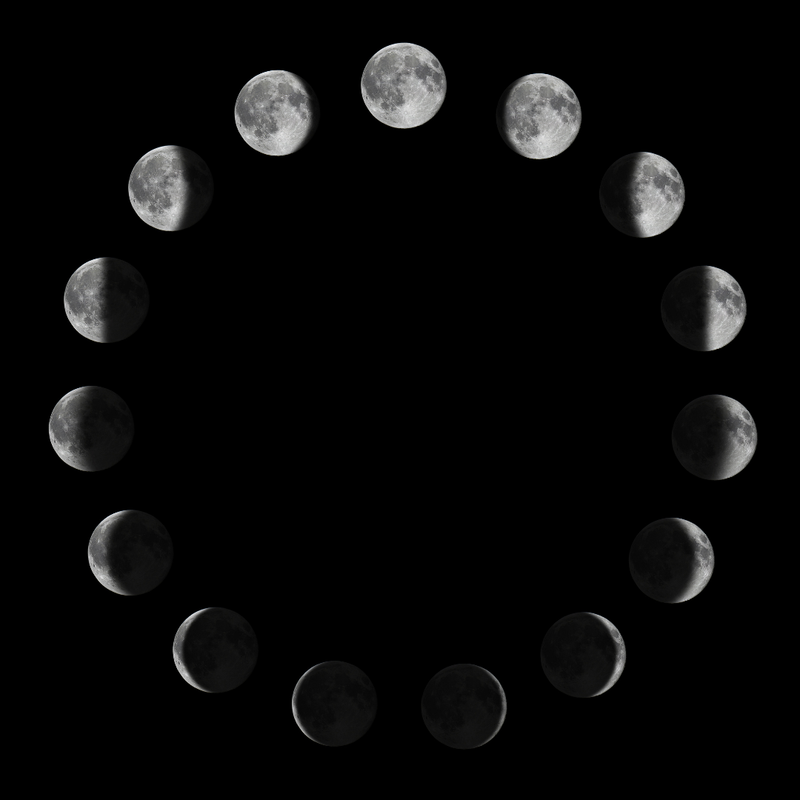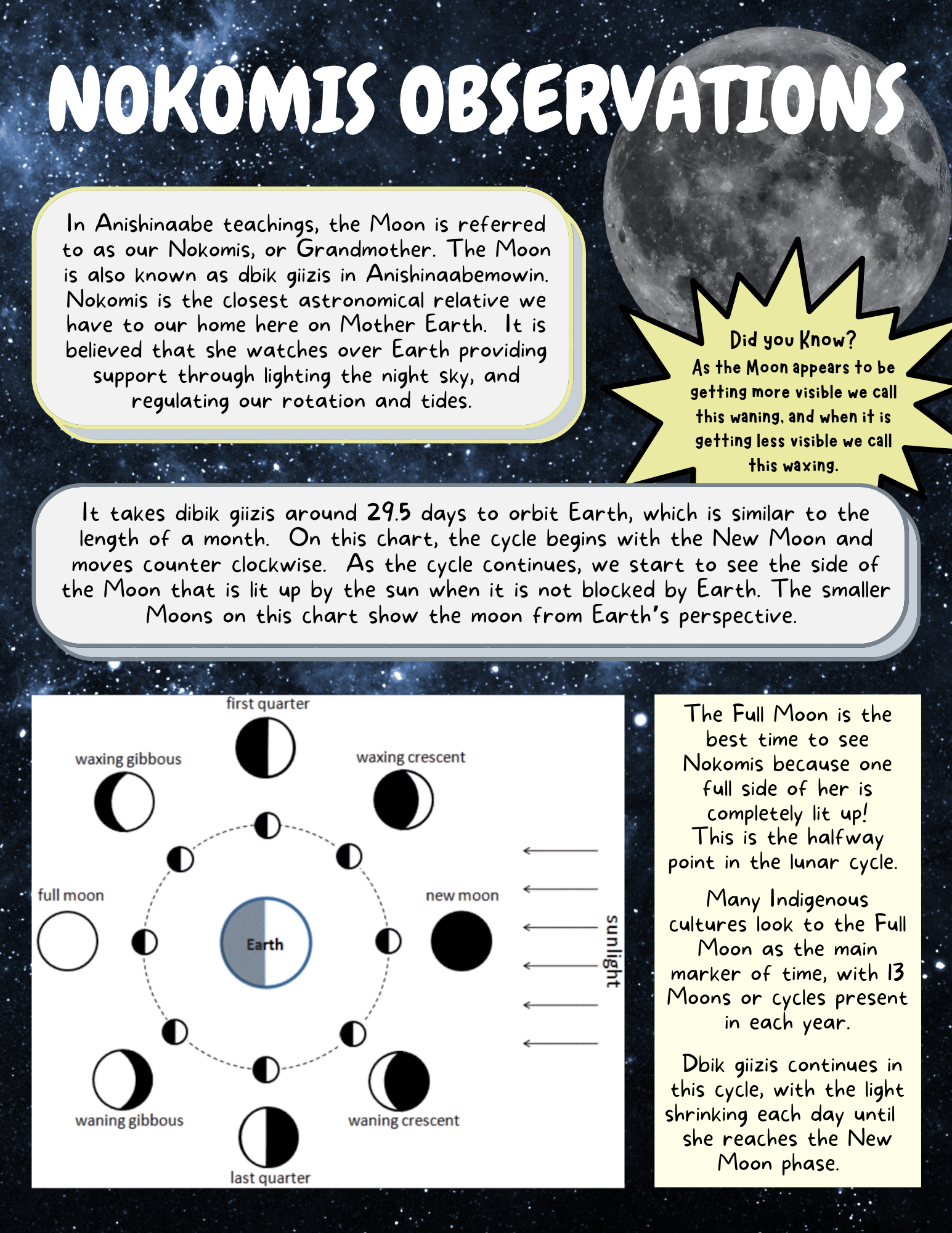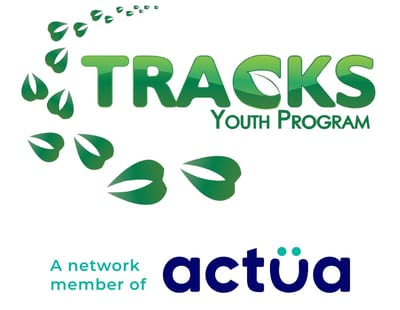Astronomy Activity #1: Nokomis Observations

Nokomis Observations
In Anishinaabe teachings, the Moon is referred to as our Nokomis, or Grandmother. The Moon is also known as dbik giizis in Anishinaabemowin. Nokomis is the closest astronomical relative we have to our home here on Mother Earth. It is believed that she watches over Earth providing support through lighting the night sky, and regulating our rotation and tides.
Did you know that dbik giizis goes through a cycle of change every month?
It takes dibik giizis around 29.5 days to orbit Earth, which is similar to the length of a month. On this chart, the cycle begins with the New Moon and moves counter clockwise. As the cycle continues, we start to see the side of the Moon that is lit up by the sun when it is not blocked by Earth. As the Moon appears to be getting more visible we call this waning, and when it is getting less visible we call this waxing. The smaller Moons on this chart show the moon from Earth’s perspective. The Full Moon is the best time to see Nokomis because one full side of her is completely lit up! This is the halfway point in the lunar cycle. Many Indigenous cultures look to the Full Moon as the main marker of time, with 13 Moons or cycles present in each year. Dbik giizis continues in this cycle, the light shrinking with each day until it reaches the New Moon phase.

Nokomis Observations Activity
Using this chart as a reference, create a Moon Journal to study the phases of dbik giizis. The New Moon takes place on March 13th so you should be able to track the phases easily throughout the month!
Materials: Writing utensils, paper or notebook, binoculars are helpful but not necessary.

If you are interested in downloading these graphics, here is link to the PDF file!
Giizhigoong Activity Series-1.pdf
The Giizhigoong program is supported through a memorial fund set up by the family of Adam Evans. We are proud to support the legacy of science education in the field of Astronomy made possible through this funding. Miigwech!
